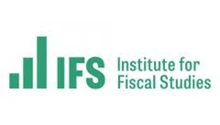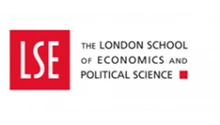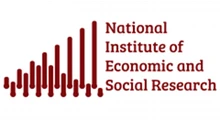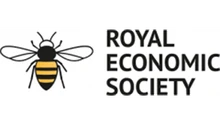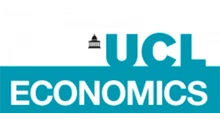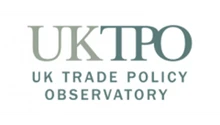UK inflation has fallen more than expected, with lower costs for petrol offsetting rises in clothes prices. But this month’s data pre-date sharp increases in other regulated bills, including energy, water and council tax. Also looming are the effects of tariff wars and mounting economic uncertainty.
The UK’s rate of inflation has fallen. In the year to March 2025, the consumer price index (CPI) rose by 2.6% – 0.2 percentage points lower than in the previous month. Flat prices for ‘recreation and culture’ – a division of goods and services that includes games, package holidays and streaming services – and falling motor fuel inflation helped to offset a rise in clothing costs.
But with recent increases in common household charges, including energy bills and council tax, the stability in the March data might be the calm before the storm.
Figure 1: Annual inflation, UK and G7
Source: National statistics agencies, author’s calculations.
UK inflation is currently joint second highest in the G7 (see Figure 1). It is behind Japan (3.6%), level with Canada (2.6%), and ahead of the United States (2.4%), Germany (2.2%), Italy (2%) and France (0.8%).
Despite some variation, most major Western economies have experienced a period of relative price stability since mid-2024, with all G7 nations except Japan managing to keep inflation below 3%. Some appear to be in a ‘valley’ of moderate inflation: past the extreme volatility of the post-Covid-19 recovery period, but anticipating a (potential) new wave of price pressures driven by escalating trade tensions.
Flat recreation and culture prices have contributed most to the slowdown in inflation (see Figure 2). The prices of products in the division – which include games, toys and hobbies, and, rather oddly, data processing equipment – rose by 2.4% in the year to March 2025, down from 3.4% in February. This marks the lowest annual rate for the category since October 2021. On a monthly basis, prices were unchanged, compared with a 0.9% increase a year earlier.
In contrast, the only division to see a significant increase was ‘clothing and footwear’. Large price rises for women’s clothes pushed prices up by 1.1% in the year to March 2025, a reversal of the 0.6% fall in the year to February.
Figure 2: Contributors to the 0.2 percentage point fall in inflation, by sector
Source: Office for National Statistics (ONS)
Inflation is expected to rise over the coming months, with substantial increases in household bills set to drive up the cost of living. Next month, increases in bills already felt by households will be incorporated into price statistics.
On 1 April 2025, the prices of a slew of regulated services – including energy, water and council tax – increased. Ofgem (the UK’s energy regulator) has raised the energy price cap by 6.4%, increasing the average annual dual-fuel household bill from £1,738 to £1,849. This uptick was driven primarily by higher wholesale gas prices. In some places, water bills have seen even more dramatic regional increases, with Southern Water bills jumping 47% (to £703 per year) and Anglian Water customers now paying 19% more this year (at £626).
While the impact of bill increases is clear-cut and already having an effect, the outlook from the emerging trade war is less certain. US trade policy has been volatile and unpredictable, with multiple cycles of tariff announcements, modifications and reversals. The Trump administration has delayed by 90 days the imposition of most of its purportedly reciprocal tariffs, though not others (including the baseline 10% on all goods imports).
The effect of the trade war on UK prices will depend heavily on its impact on the global economy, any reciprocal action and the responses of US trade partners. The current chaos has decreased expectations of global growth, and reduced demand is already having a price impact. Crude oil prices are down almost 15% in the last month, which should eventually filter through to lower prices at the pump. But this process typically takes several weeks to materialise fully for consumers.
The current uncertainty about tariffs is also anathema for investment, with knock-on effects for consumers. Lower investment could lead to delayed expansion plans, freezes on new hiring and postponed wage increases, further dampening consumer spending power in the UK. For some sense of scale, one measure of uncertainty - the economic policy uncertainty index – has peaked at its highest level since calculations began in 1997 – beyond even pandemic-era highs.
Trade diversion resulting from the US tariffs could reduce prices in some sectors. Foreign firms blocked from their habitual US customers – with a 145% tariff rate looming over China, for example – may reduce prices in order to find alternative markets. This risks flooding UK markets with diverted goods, but could offer lower prices to UK consumers.
Conversely, further reciprocal tariffs would push up prices. If the UK levies its own tariffs on imports from the United States, for example, prices will rise. British consumers are most exposed to potential increases in fuel costs, as the UK imports £19 billion worth of such products from America – our second highest import category.
Looking ahead, the incorporation of April's regulatory price increases (in energy, water and council tax) are likely to push headline inflation above 3%, keeping it beyond the Bank of England’s target of 2% a year. At the same time, the complex dynamics of global trade tensions create both upward and downward pressures on prices. The ultimate impact of increased American isolationism will depend on how businesses, consumers and governments act and react.
With these significant challenges on the horizon, the UK's brief period of relative price stability appears to be ending. The Bank of England's forecast of inflation reaching 3.7% by the summer seems increasingly plausible, suggesting difficult times ahead for policy-makers, businesses and households alike.
Where can I find out more?
Recent trade tensions have thrust the relationship between tariffs and inflation into the spotlight.
- How were the US ‘liberation day’ tariffs determined? What do deficits tell us about where trade policy might go next? The Economics Observatory’s relaunched newsletter takes a close look at global trade.
- What could higher US tariffs mean for the UK economy? UK exports could decline by up to £22 billion says a new NIESR report, ‘Implications of Higher US Tariffs for the UK Economy’, from December of last year.
- The Bank of England’s February Monetary Policy Report sets out its forecasts for inflation and other key economic metrics.
Find out more about inflation from the Economics Observatory:
- What are the links between job vacancies, unemployment and inflation? Read Fergus Jimenez-England on the links between the labour market and inflation, and the puzzle of why unemployment has remained historically low despite rising interest rates.
- What are the future prospects for UK inflation? In June 2024, Huw Dixon explored what falling inflation means for the future amid domestic and global risks.
- Can artificial intelligence help us to measure inflation? Economics Observatory research into how AI tools can improve the speed, cost, and breadth of inflation measurement.












